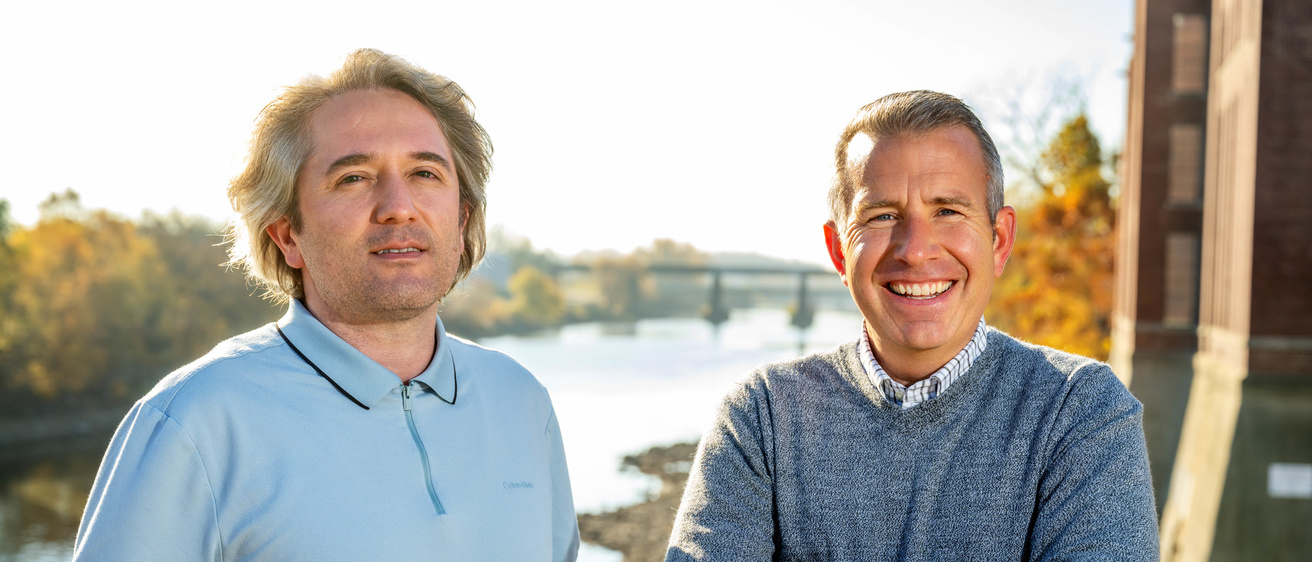University of Iowa researchers at the College of Engineering have been selected for a key role in a multi-institution, multi-disciplinary National Science Foundation (NSF) project to tackle a problem at the intersection of climate, sustainability, food, energy, pollution, and the economy.
The project called the Blue-Green Action Platform, or BlueGAP, involves aims to connect communities across watersheds to address economic and health challenges caused by nitrogen pollution in their water and local environment. The core of BlueGAP is a systems model focused on local experiences and knowledge to show people the costs and benefits of actions at specific leverage points of nitrogen management.
UI’s portion of the project is led by David Cwiertny, William D. Ashton Professor of Civil Engineering and professor of chemistry, and Ibrahim Demir, associate professor of civil and environmental engineering. The team will be developing the next generation information platforms with visualization, data analytics, and artificial intelligence capabilities to support communities in understanding and acting on their water quality challenges.
“Nitrogen pollution is a continental-scale problem that affects communities across the U.S. in many ways. BlueGAP aims to amplify the voices of those community champions working to improve water quality through compelling storytelling and engaging data visualizations that will also help raise awareness and empower others to take action,” said Cwiertny, who is also the project’s co-principal investigator.
Demir added, “Artificial Intelligence and visual data analytics systems will play a significant role in making information and knowledge more accessible to communities to support their decision-making.”
Eric Gidal, a UI English professor, will lead a team of graduate students from programs in the arts and humanities who will develop different forms of media to share stories from Iowa about nitrogen pollution and water quality.
"I'm looking to bring together students with an interest in public engagement and collaborative scholarship," Gidal said. "I've been working for the past three years with Humanities for the Public Good, a Mellon Foundation funded initiative here at the University of Iowa, and I am pleased for the opportunity to contribute to this collective effort."
Led by the University of South Florida, the BlueGAP project also includes Stetson Law School, Black in Marine Science, the Tampa Bay Estuary Program, and community and private sector organizations. Researchers will pilot their efforts on three differently sized watersheds in Iowa, Florida, and the US Virgin Islands, to design and build capacity across watersheds.
Maya Trotz, professor of civil and environmental engineering at the University of South Florida and the BlueGAP project’s principal investigator, highlighted the collaborative nature of the project. “Our BlueGAP team is excited to learn with and from each other as we address issues of equity and community engagement in our work,” Trotz said.
The National Science Foundation (NSF) has awarded $5 million over two years to the BlueGAP project, of which $1.5 million will support the UI team’s efforts. BlueGAP is one of six multi-disciplinary teams selected for phase 2 funding through NSF’s $30 million Convergence Accelerator Networked Blue Economy investment to take aim at big picture challenges related to the blue economy. The World Bank defines the blue economy as “the sustainable use of ocean resources for economic growth, improved livelihoods, and jobs while preserving the health of ocean ecosystems.”
The BlueGAP team has identified four objectives as it works to accelerate best practices for nitrogen management.
1. Advance human-centered design of solutions to pollution.
2. Integrate storytelling with innovative scientific evidence to identify leverage points for action
3. Create inclusive educational materials to impact nitrogen management and inform communities
4. Establish a sustainability plan for BlueGAP that will continue to assist communities addressing nitrogen pollution well beyond the lifetime of the NSF award.
